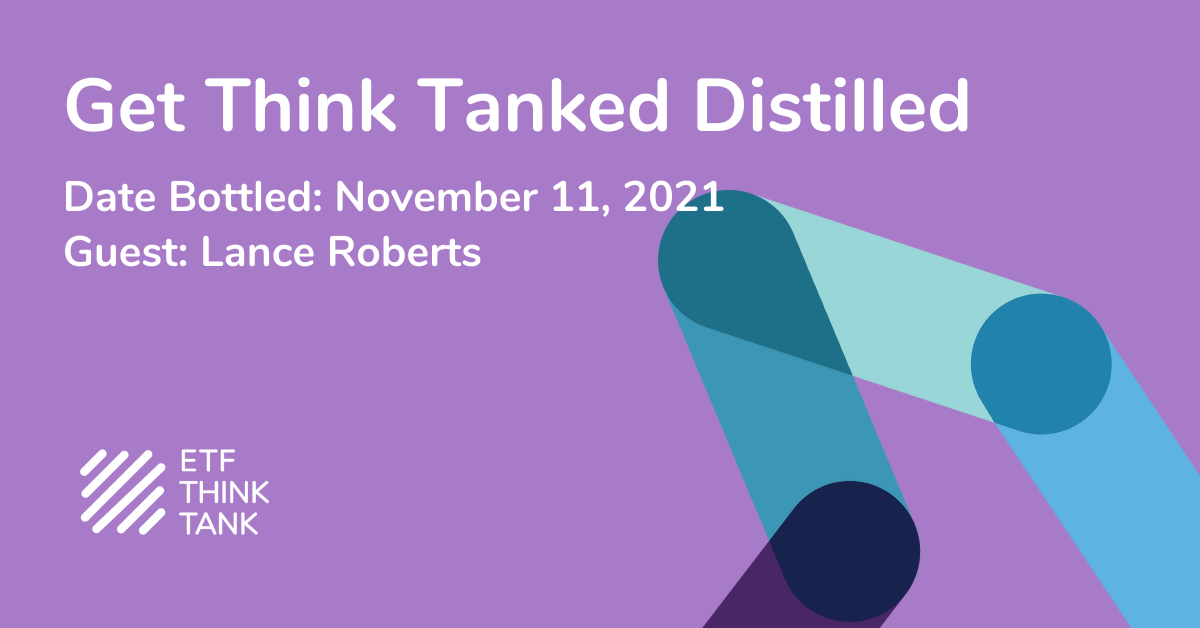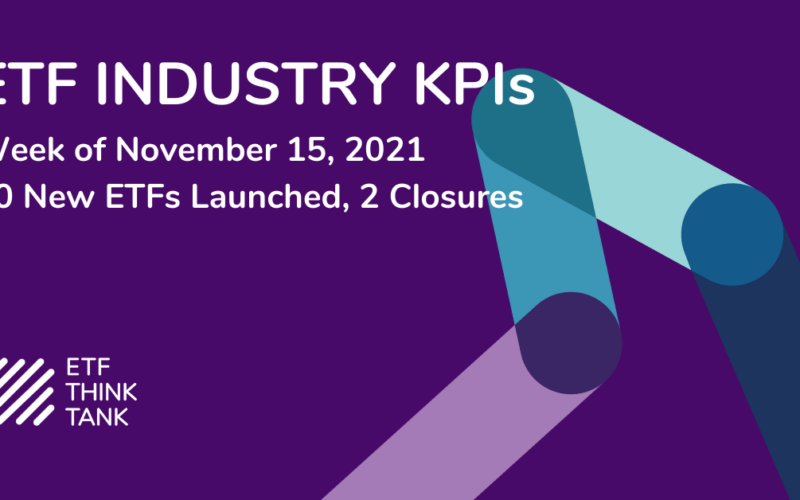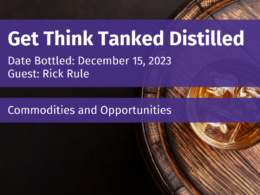Lance Roberts is the Chief Investment Officer of RIA Advisors and Lead Strategist at RealInvestmentAdvice.com, both of which focus on financial life planning, portfolio customization and education about the markets, challenges, and opportunities. He’s viewed as something of a market bear and joined the ETF Think Tank to talk about his investment process and what he sees as the market’s biggest risks today.
He quickly clarifies that he’s not trying to be a bear, but someone who’s continuously trying to poke holes in his own investments. His firm focuses on risks and works to identify the conditions or events that could result in losses within a portfolio. While that focus on downside risks tends to earn a reputation as a contrarian or permabear, he views it as responsible risk management that aims to protect principal in down markets.
In the current market environment, he identifies three primary risk factors – Fed tapering, Fed rate hikes and an inverted yield curve. Roberts’ view is that the real risk of a market correction tends to occur about 6-9 months out from the Fed’s initial decision to tighten. While the Fed is about to begin tapering, it’s still going to be adding tens of billions of dollars of liquidity well into 2022, something which could impact that timeline. When the Fed begins hiking rates, that risk increases again. If the yield inverts, risk rises even further. He notes that the Fed has a long history of contributing to bubbles and it has little control over what happens despite what it says.
While many people draw parallels between the current high inflationary environment and the 1970s, Roberts notes some very specific differences. Back then, inflation and interest rates were rising, but it was happening in tandem with economic growth rates. Today, extraordinary debt levels are changing the narrative. Back then, household debt was 60% of income, but it’s 160% today. People say that interest rates today should be much higher, but that’s unlikely to happen because of huge debt loads. Companies and governments need low rates to be able to service existing debt. As rates rise, the housing market goes bust. The economy begins to grind to a halt above 2% and interest rates start to come back down. A Japanese style liquidity trap is possible in the United States.
Today, the headline is inflation, but Roberts believes that inflation is actually deflationary. As we’ll probably begin to see very soon, inflation tends to suppress economic growth and the flattening of the Treasury yield curve that we’ve seen recently is a result of the difference between current market pressures – the short end rises because of rate hike expectations, while the long end falls due to contracting growth. Every time the Fed has raised rates, it’s led to a financial crisis (LTCM, savings & loan, housing bubble). He also notes that he expects earnings expectations to almost certainly be revised downward over the next several months.
Roberts talks about his view of the potential in both blockchain and cryptocurrency. He says right away that he owns both Bitcoin and Ethereum because he’s trying to learn more about them. The whole purpose of blockchain was innovation and the desire to conduct business in a decentralized forum, but we haven’t really seen that yet (although it’s probably coming). The infrastructure bill, he believes, tipped the government’s hands with its overall endgame for cryptocurrency, which is it is viewed as a threat to fiat currency, and they could try to regulate them. It’s probably coming in some shape or form, but the question is how and when. Roberts remains long these two currencies but admits that he doesn’t know how this will turn out.
Other key takeaways:
- He believes that fixed income drives equity returns and the current market where the two asset classes are correlated should not be the case.
- Many misunderstand what risk management is. To use a sports analogy, it’s about getting singles, not home runs. Investing should be a game of inches and small movements can lead to outperformance over time.
- Today’s markets are a lot like 1999 in that people everywhere were getting into brokerage accounts, options, and day trading. Today, it’s crypto and Robinhood. Investors will eventually learn the tough lesson. It’s great that they’re making money today, but can they hang on to it? They lost it all in 2000.
- There’s really nothing different between active and passive. There are business decisions being made in every index, such as rebalancing, which ends up being an active strategy in and of itself.
- Roberts’ focus has been that investors don’t want to lose capital. Buy and hold isn’t necessarily attractive. Investors want to know how to make money on the upside, while being protected when markets go down. His strategies may give up some of the upside, but they focus on losing less on the downside. He’s a big believer in risk management.
This week our guest will be Stacey Morris, Director of Research at Alerian, joining us to discuss energy infrastructure. Sign up here.
Disclosure
All investments involve risk, including possible loss of principal.
The information provided here is for financial professionals only and should not be considered an individualized recommendation or personalized investment advice. The investment strategies mentioned here may not be suitable for everyone. Each investor needs to review an investment strategy for his or her own particular situation before making any investment decision.
All expressions of opinion are subject to change without notice in reaction to shifting market conditions. Data contained herein from third party providers is obtained from what are considered reliable sources. However, its accuracy, completeness or reliability cannot be guaranteed.
Examples provided are for illustrative purposes only and not intended to be reflective of results you can expect to achieve.
The value of investments and the income from them can go down as well as up and investors may not get back the amounts originally invested, and can be affected by changes in interest rates, in exchange rates, general market conditions, political, social and economic developments and other variable factors. Investment involves risks including but not limited to, possible delays in payments and loss of income or capital. Neither Toroso nor any of its affiliates guarantees any rate of return or the return of capital invested. This commentary material is available for informational purposes only and nothing herein constitutes an offer to sell or a solicitation of an offer to buy any security and nothing herein should be construed as such. All investment strategies and investments involve risk of loss, including the possible loss of all amounts invested, and nothing herein should be construed as a guarantee of any specific outcome or profit. While we have gathered the information presented herein from sources that we believe to be reliable, we cannot guarantee the accuracy or completeness of the information presented and the information presented should not be relied upon as such. Any opinions expressed herein are our opinions and are current only as of the date of distribution, and are subject to change without notice. We disclaim any obligation to provide revised opinions in the event of changed circumstances.
The information in this material is confidential and proprietary and may not be used other than by the intended user. Neither Toroso or its affiliates or any of their officers or employees of Toroso accepts any liability whatsoever for any loss arising from any use of this material or its contents. This material may not be reproduced, distributed or published without prior written permission from Toroso. Distribution of this material may be restricted in certain jurisdictions. Any persons coming into possession of this material should seek advice for details of and observe such restrictions (if any).












